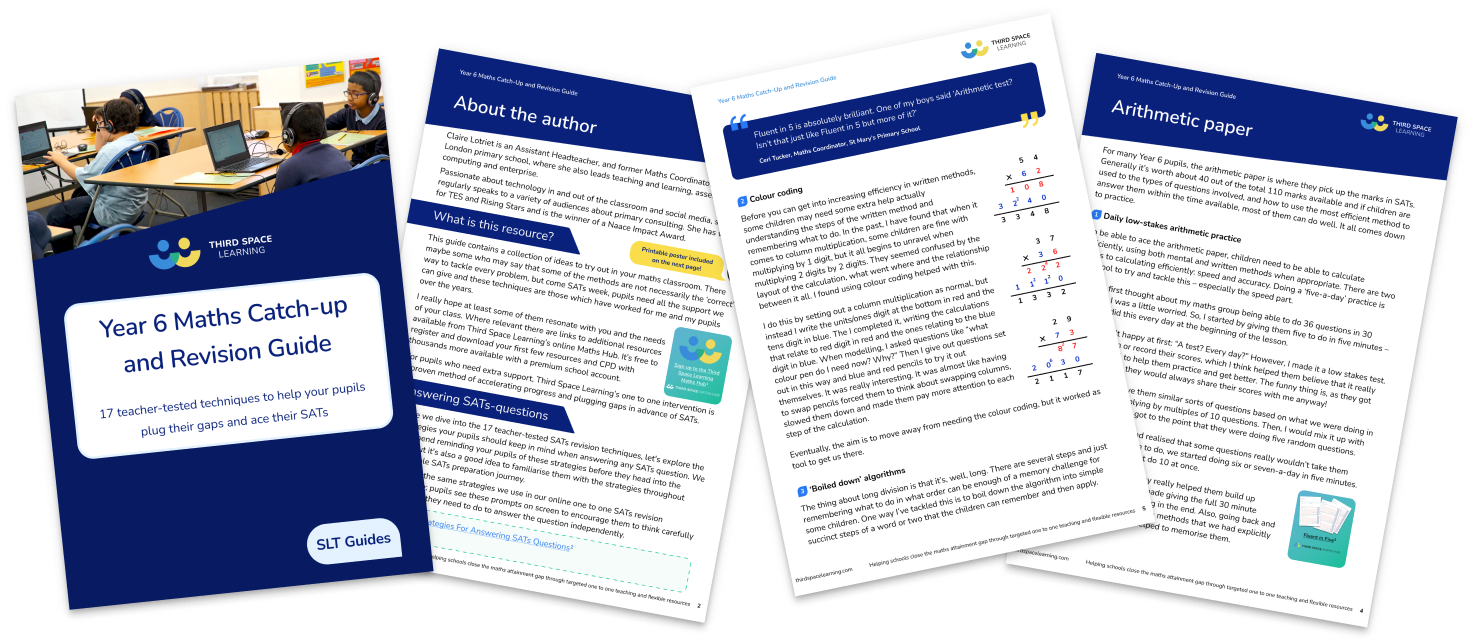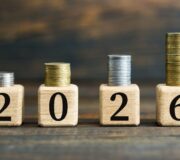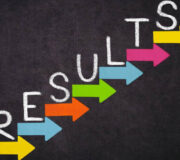KS2 SATs Results 2016 Are In… What next?
This article was originally published on 6th July 2016
So, you’ve now looked at the KS2 SATs results for 2016. Cue, cheers and celebrations all round? Perhaps, but then again…
Nobody said it would be easy, but did it have to be quite so difficult? And we’re not just talking about the tests themselves. The entire ‘journey’ to 2016 National Assessments seems to have been weighed down by controversy, changing guidance, leaked test papers and a nagging sense of unpredictability about the whole business. Here’s our assessment of the situation, how to explain it to parents and pupils and some advice and guidance to help you sail through your next SATS exams.
Year 6 Maths Catch-up and Revision Guide
Get 17 teacher-tested techniques to help your pupils ace their KS2 SATs. Provides a friendly, approachable style with proven success.
Download Free Now!Here are the key Year 6 SATS national figures
To remind you, in case you need, it, these are the headline statistics:
53 per cent of pupils met the expected standard in reading, writing and maths
66 per cent of pupils achieved the expected standard in reading
74 per cent of pupils achieved the expected standard in writing, which is teacher assessed
70 per cent of pupils achieved the expected standard in mathematics
72 per cent of pupils achieved the expected standard in spelling, punctuation and grammar (SPAG)
Read more: Standardised Scores: What Do They Mean?
Comparisons to 2015 don’t help
We’ve heard it from Nicky Morgan herself “They simply cannot be compared directly,” she said. This year’s tests were “based on a new, more rigorous national curriculum, based on the best evidence from across the world.”
But it is difficult not to, isn’t it? The expected standard last year of Level 4, was achieved by 80 per cent of pupils in all of reading, writing and mathematics. The Government said when it introduced the tougher tests that the expected standard would be equivalent to a Level 4b but many Heads thought they were closer to a 5.
The result is that we now have 47% of pupils and their parents being told that they have not achieved the expected standard in all subjects. And some inconclusive evidence so far on how many schools will actually reach the 65% reading, writing and maths attainment floor standard.
But really, the SATs results are just a measure for pupils. Not until September, when progress figures are added, will we really know what this means for each school’s own performance and their Ofsted future.

Unlimited primary maths tutoring with Skye, the voice-based AI maths tutor.
Built on the same principles, pedagogy and curriculum as our traditional tutoring, but with more flexibility, reach and lower cost.
Join the schools already helping hundreds of primary pupils nationwide with Skye’s one to one maths tutoring.
Watch Skye in action
So what next? Your 5-point post-SATs plan
Whatever your results are, many of you will be wondering, what to do now? What do we tell parents, what, if anything, to do differently? So we asked several SLT members in schools across the country and here’s the advice and reflections they gave:
1. These results are unlikely to tell you much you didn’t know before about the pupils – your own internal assessment is likely to be as rigorous and, in many cases, more detailed and specific. (Think about how many topic areas were not included in the Maths papers.)
2. This is just a snapshot of a pupil – it doesn’t tell us what the skills are that they have, and it covers a curriculum they have only been taught for two years.
3. While applauding success in these results, without the progress measures, they don’t actually tell you much about the child’s teaching and learning experience at school.
4. Teachers will have worked their socks off for their Year 6 pupils throughout the year; poor results can be the outcome of many different inputs. The answer is not to start teaching to the test or pointing the finger at individual teachers.
5. Current Year 6 pupils are just about to embark on an exciting, but for some, daunting, new stage of their life. Now is the time to celebrate their successes from primary and give them confidence in their ability to grow as they transition to secondary school. Specific guidance as to areas they need to work on is helpful, unmediated negative test results are not.
Specific maths recommendations
Include the Teacher Assessment and progress results, together with test scores in all parent reports
Ensure all pupils and parents understand what their own specific next steps are, and provide bespoke gap analysis, especially for those who haven’t met the expected standard
In due course, review the content of each paper and consider whether there are any changes in preparation or interventions you could make that might help for next year. For example, anecdotally, the arithmetic paper seemed to be particularly challenging, however one school, whose pupils ‘smashed it’, attributed this in part to daily focus on boosting memorisation of techniques which improved speed and accuracy.
Tips for 2017 KS2 SATs preparation and revision programmes
There are some key elements that any good revision programme should include. As we work with 5,000 Year 6 pupils every week to plug gaps and help support them up to their own KS2 SATs in 2017, this is the approach we’ll be following. I hope it comes in useful when considering your own pupil preparation:
Interleaved practice – ie returning to concepts at regular intervals not doing it all at once
Questions that encourage self-explanation to show pupils’ understanding
Distributed practice – ie not just cramming all the revision work into the last few weeks before the tests
- Plenty of practice on test questions
Plugging learning gaps as required
Differentiated activities so each pupil can progress
Problem solving strategies
Arithmetic practice in line with the new curriculum
- Positive feedback to help support a pupil’s growth mindset
To find out more about how to support your Year 6 in Maths, read The 11 Educational Principles That Will Help You Make The Most Of Your SATs Revision.
Final thoughts
When you look back on the SATs, review the impact of your approach to teaching and intervention, celebrate successes with pupils or start to plan for next year, perhaps the most important thing to do is to recognise and applaud all the hard work that has been put in across the school by staff and pupils.
It has been a challenging year; more has been expected than in previous years. Standards have been raised and everyone in education has had to adapt to a changing landscape. We know just how much everyone in the schools we work with have supported pupils and made sure they had been given the opportunities and guidance to achieve as much as possible.
Some of these schools have been in touch to share their successes and thoughts on the results and we’d love to know how you’re feeling. Just email hello@thirdspacelearning.org.
We hope that you’ve been able to look through to the positive from these results and that they matched your own expectations. And for those who are finding optimism difficult we’ll leave you with final thoughts from a TES article from Brian Walton (@oldprimaryhead1), Headteacher of Brookside Academy.
“I just feel that when it comes to using test results to measure success – when we place so much importance on them – we lose sight of the child in an attempt to create a big picture.”
DO YOU HAVE STUDENTS WHO NEED MORE SUPPORT IN MATHS?
Skye – our AI maths tutor built by teachers – gives students personalised one-to-one lessons that address learning gaps and build confidence.
Since 2013 we’ve taught over 2 million hours of maths lessons to more than 170,000 students to help them become fluent, able mathematicians.
Explore our AI maths tutoring or find out about year 6 SATs for your school.







